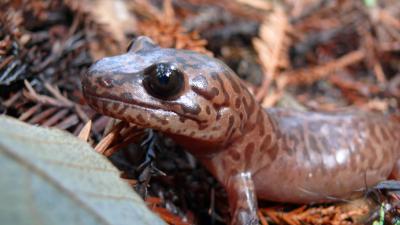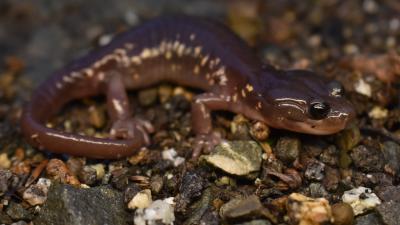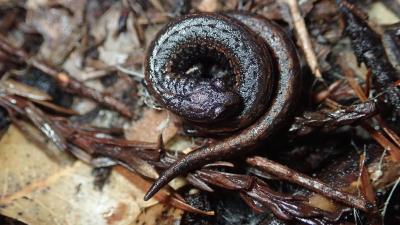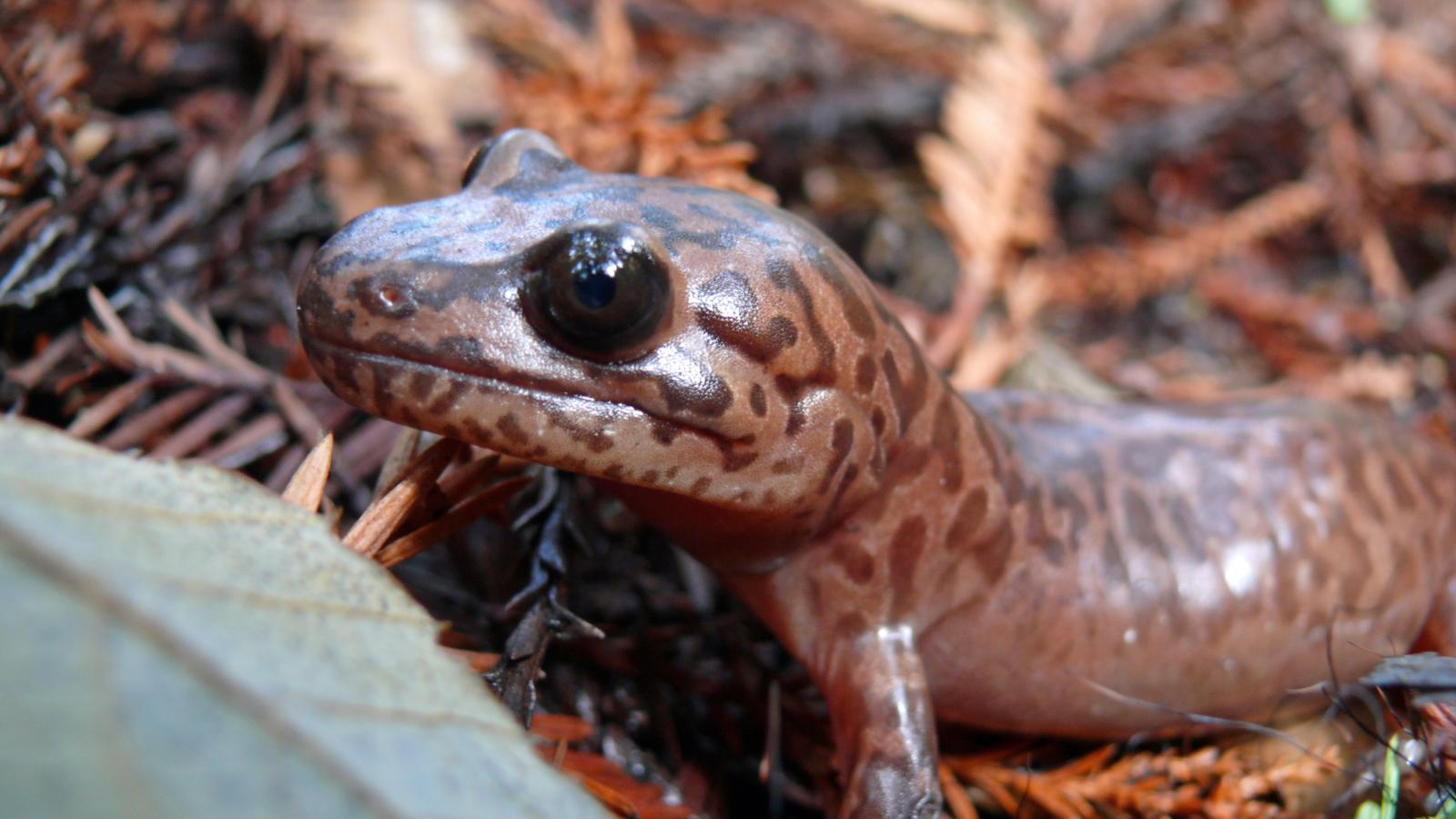Winter is the season for salamander spotting as they emerge from their non-breeding shelters to find mates and lay eggs.
Rainfall plays a crucial role in the life cycles of many amphibians, including salamanders. Several species exhibit biphasic life cycles with aquatic larval stages followed by metamorphosis into terrestrial adult forms. Other fully terrestrial salamander species still rely on rainfall to produce moist environments they require to live and breed.
Here are a few of the many salamanders you may come across in the Santa Cruz Mountains as they bustle about during breeding season:
California giant salamander (Dicamptodon ensatus)

California giant salamanders are some of the largest terrestrial salamanders in the world, capable of growing to a total adult length of 12 inches!
These salamanders begin their lives as aquatic larvae, with tail fins to swim and gills to breathe. They eventually transform into four-legged adult salamanders with lungs, capable of breathing air and dwelling on land. However, some individuals of this species never leave the water, and reach reproductive maturity in their aquatic state in a condition known as neoteny.
California giant salamanders, like many other salamander species, are “sit-and-wait” predators, opportunistically waiting for prey to approach before pouncing and chowing down.
When threatened these salamanders may produce a rattling bark-like sound to startle predators and large adults can deliver a mean bite in defense.
Arboreal salamander (Aneides lugubris)

Arboreal (living in trees) salamanders are climbers with large toes and a semi-prehensile, or grasping, tail. Despite their aptitude for climbing, these salamanders are often spotted spending time under damp leaf litter on the forest floor of coastal oak woodlands.
Arboreal salamanders are part of the Phlethodontidae family, known as lungless salamanders. With no lungs, these salamanders breathe through their skin and membranes in their mouth and throat and are particularly reliant on moisture in their surrounding environment.
Salamanders of the Phlethodontidae family also possess naso-labial grooves, vertical slits between the nostrils and lips. When they tap surfaces with their noses, odor particles travel up the groove conveying information like chemical alarm cues, nearby food source scents and cues for courtship.
California slender salamander (Batrachoseps attenuatus)

Another member of the Phlethodontidae family, California slender salamanders are slim with little limbs, usually reaching three to five inches in total length.
These salamanders have projectile tongues they use to catch prey that venture too close forming a diet filled with a variety of invertebrates. When threatened, these salamanders coil up and rely on their cryptic coloration to hide them from predators. They are also able to detach their tail to distract predators as they scurry away.
California slender salamanders are terrestrial breeders, laying eggs in moist areas under rocks and logs or underground in burrows shortly after rain begins to fall in autumn. Salamander eggs have no hard casing to protect them from deterioration, so wet conditions may ensure eggs are able to fully develop without drying out.

